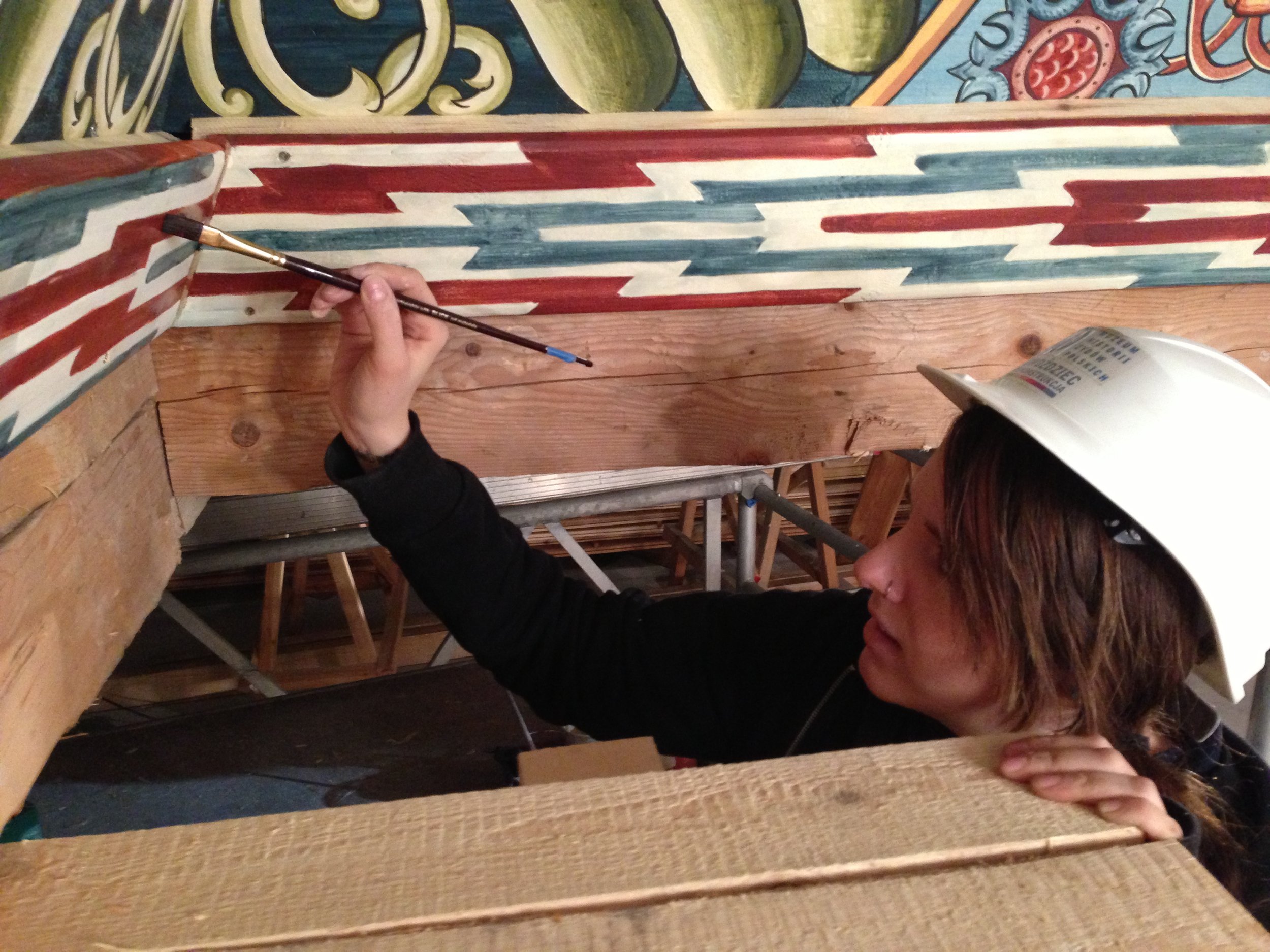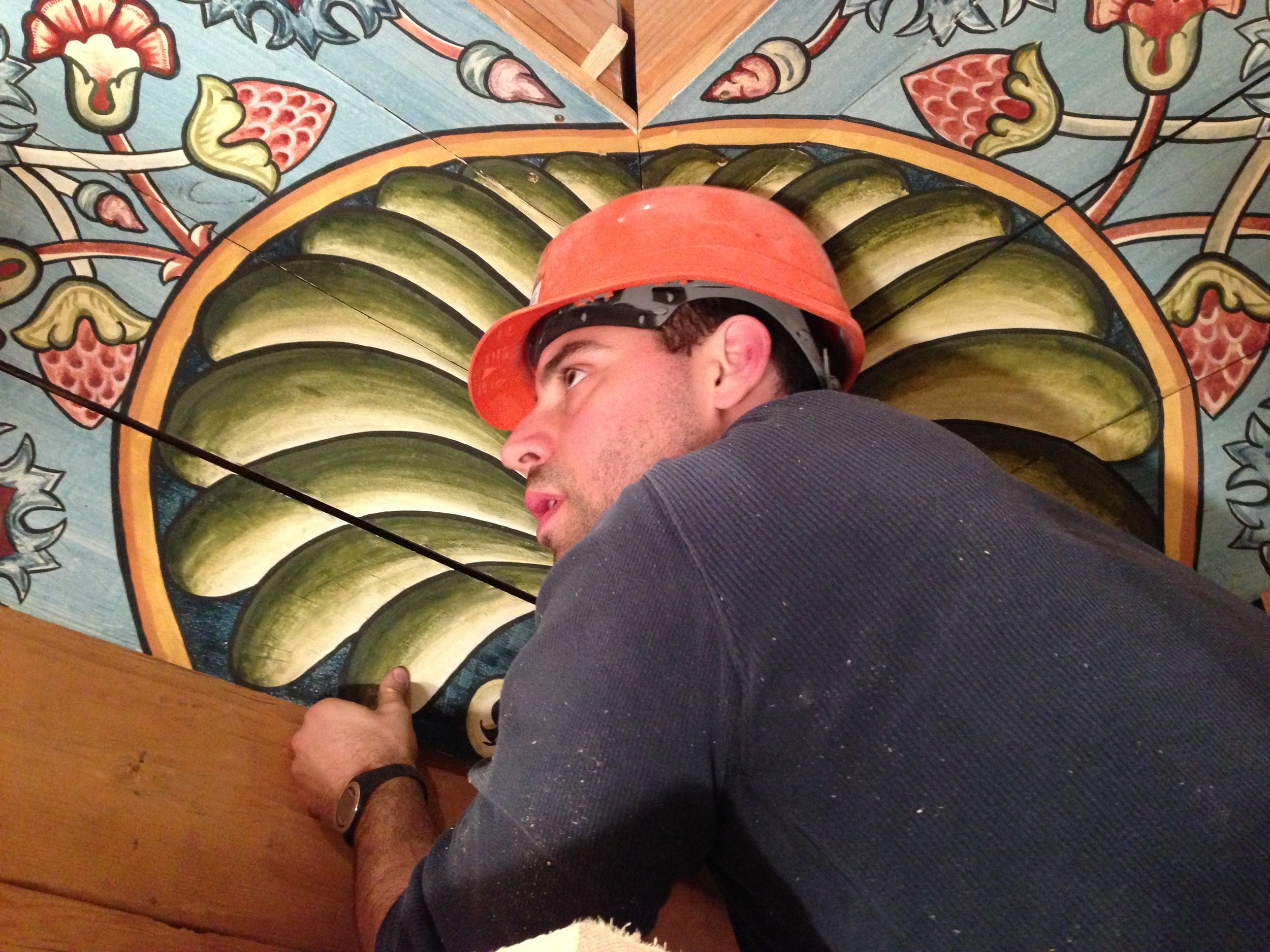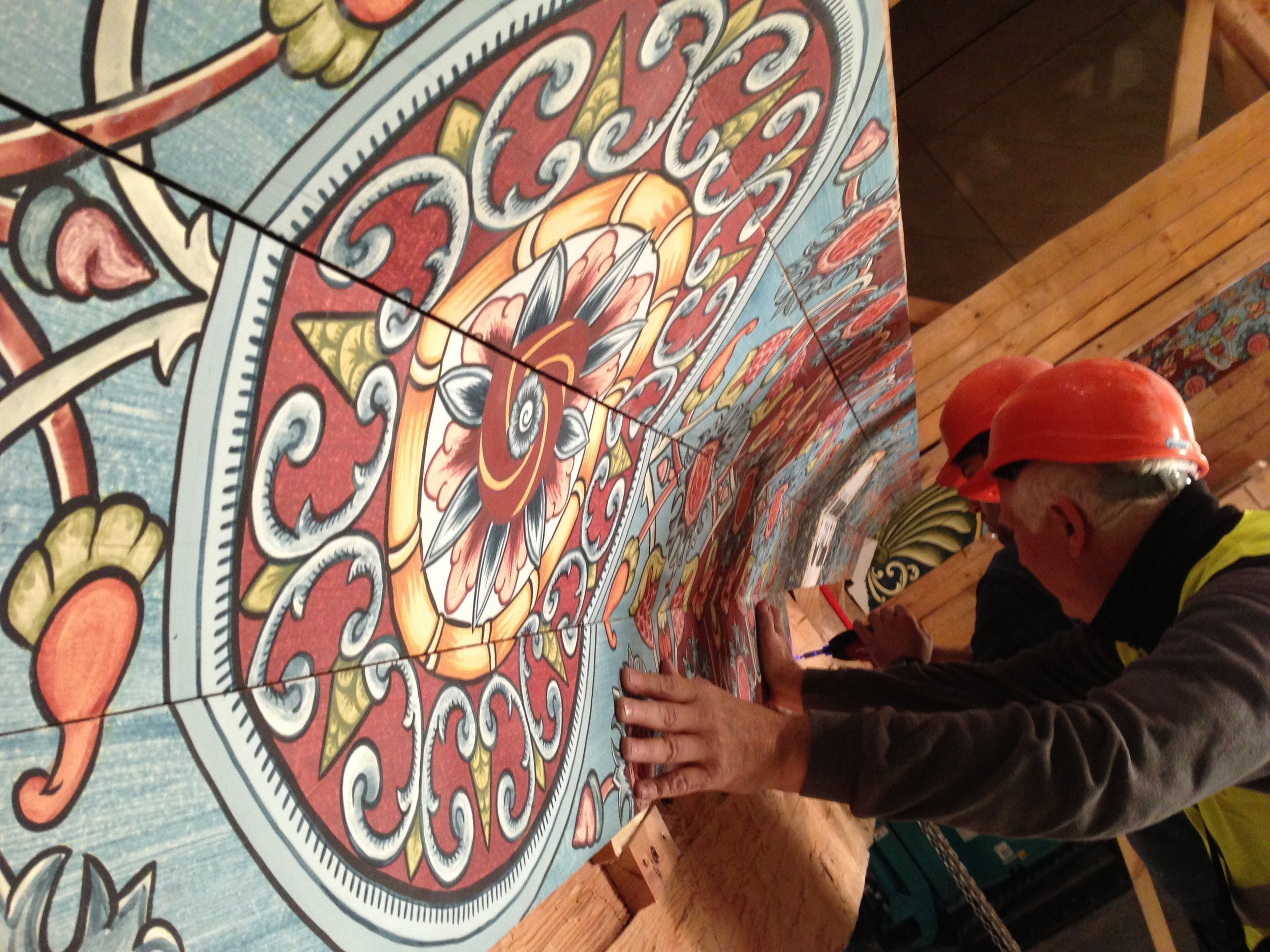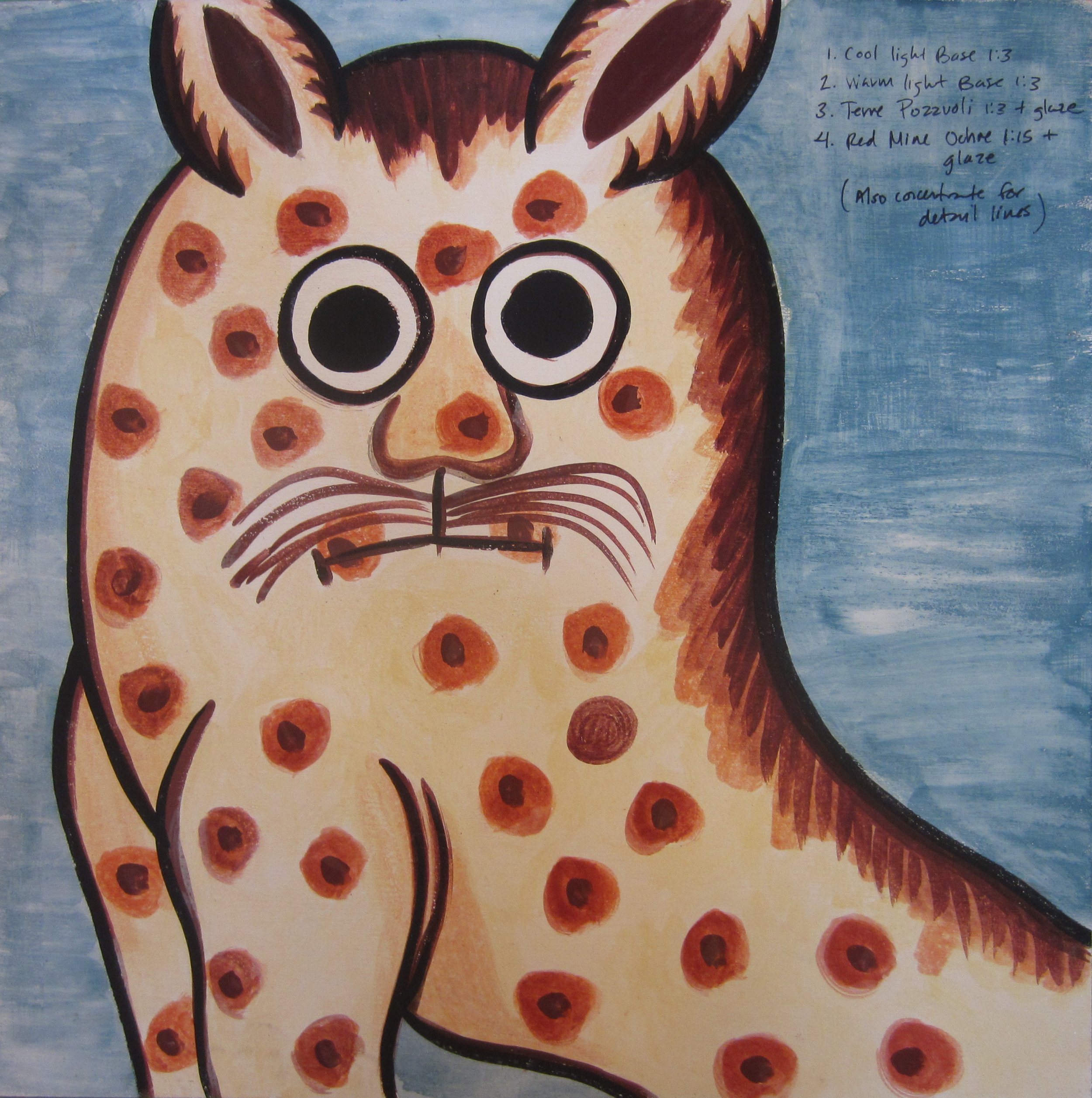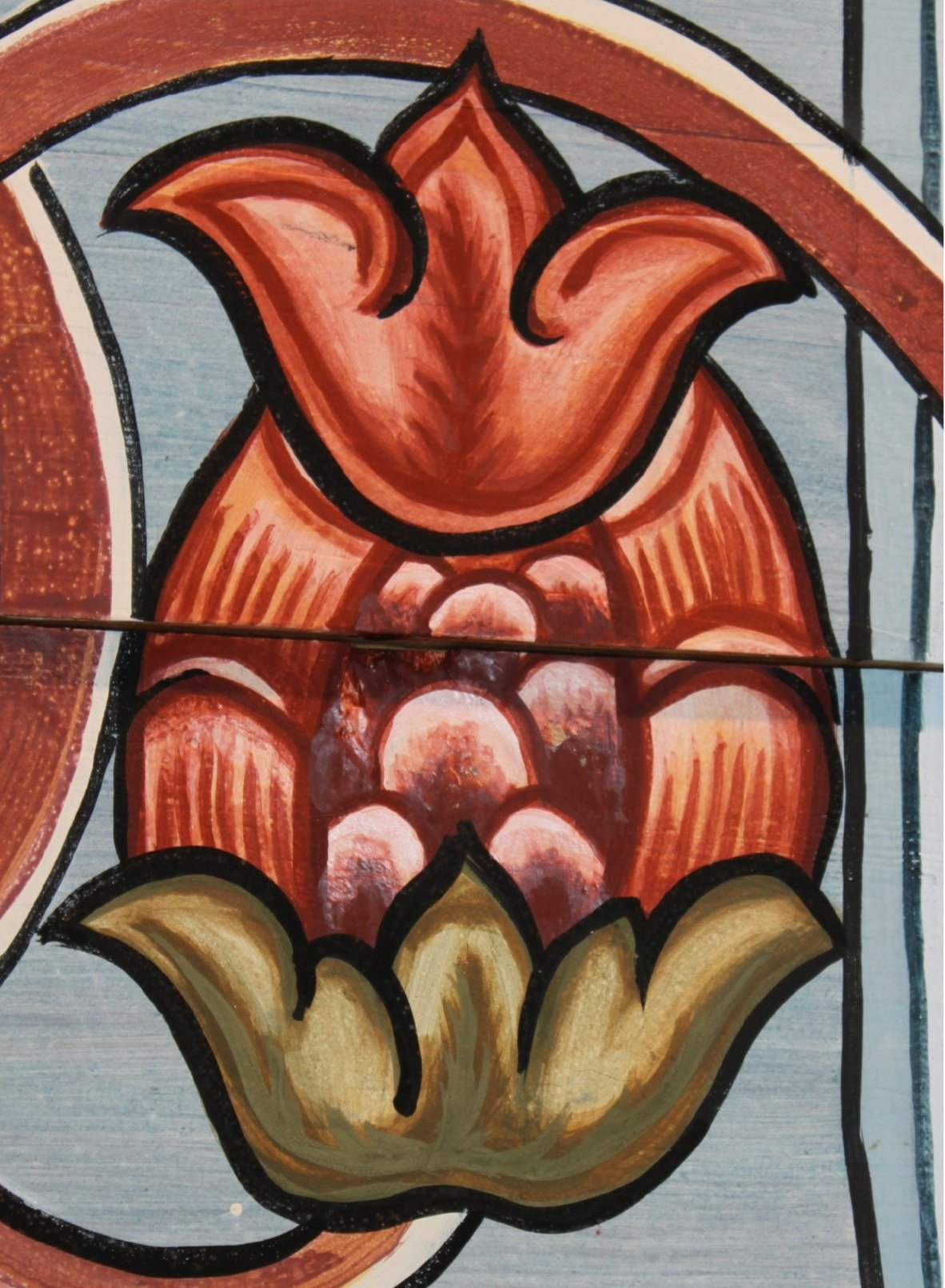The Cove
The Gwoździec Synagogue cove is the long horizontal curved band of a floral motif that surrounds the entire base of the ceiling painting, creating a connection between the cupola ceiling with the four walls of the synagogue. It consists of four sections–north, south, east and west, with repeating patterns of vine and flowers and a lower band which is similar to textile design patterns. Each side is over 30 feet and the whole cove consists of over 800 flowers and fruits, four large palm fans in each corner and four arabesques that have a medallion of Hebrew text.
How was it created?
Archival Resources
Drawing
Half-scale hand-drawing of one section of the cove based on archival photographs of the Gwozdziec synagogue, created by Thomas Hubka, author of Resplendent Synagogue: Architecture and Worship in Eighteenth-Century Polish Community.
Test Panels
Handshouse participants analyzed archival images of the flowers and fruit. Students worked with project leaders to make many color test panels of each individual detail to determine colors and forms until it was decided that they were ready for the painting directly on the boards.
Using Tom Hubka’s half-scale hand-drawing of the cove as a guide, we created templates of the many vines and flowers to manually lay out the design over the 30-foot-long cove panels. We painted the base layers before continuing on to tracing and drawing the top layer details.
Layout
Tracing
Once the overall layout was complete, participants traced the flowers, medallions, and vines templates onto the panels.
Tracing of a section of the Cove at the painting workshop at The White Stork Synagogue in Wroclaw, Poland, 2012. Courtesy of Trillium Studios
Painting
With the whole drawing laid out accurately to fill the 30-foot cove panels end to end with all the vine, flower, and medallions tracings in place, participants worked together in the extensive process of painting all the details using period pigments in distemper paints.



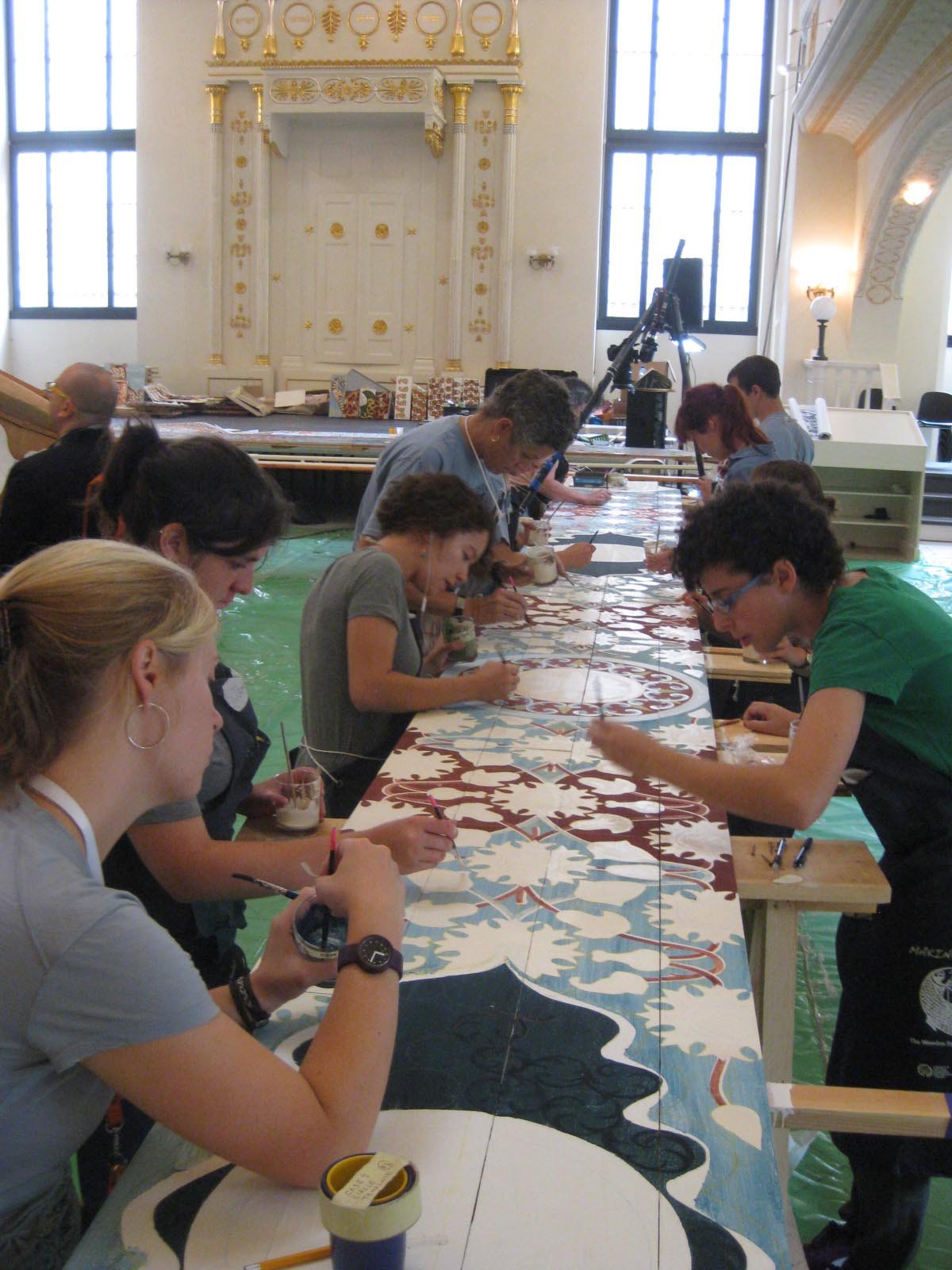






Rolling camera captures the painting of one of the Coves at the painting workshop at The White Stork Synagogue in Wroclaw, Poland, 2012. Courtesy of Trillium Studios
Form
Each cove panel is connected at the corners with a palm leaf intersection. We made a full-scale model of this connection to be sure that it would come together smoothly when the cove was installed in the ceiling.
The Chevron
“The Chevron motif that may have been used to create tent imagery was a horizontal band of interlocking chevrons (V-shaped patterns) painted on a cove that circled the prayer hall where the walls and the cupola met. The interlocking chevron pattern was one commonly used in Polish textiles and carpets manufactured in the Lviv region during the same period. However, it is my opinion that this bank referred to a ban of “claps” that God directed the Israelites to construct for the original Tabernacle. A passage in Exodus reads: “And he made fifty golden clasps, so that the Tabernacle was one (boundtogether)”(Exodus36:13)”
— Resplendent Synagogue Architecture and Worship in an Eighteenth-Century Polish Community, Thomas Hubka
Installation
Handshouse Studio installing the completed Gwozdziec synagogue roof and ceiling painting at the POLIN Museum for the History of Polish Jews in Warsaw, Poland, 2013.


